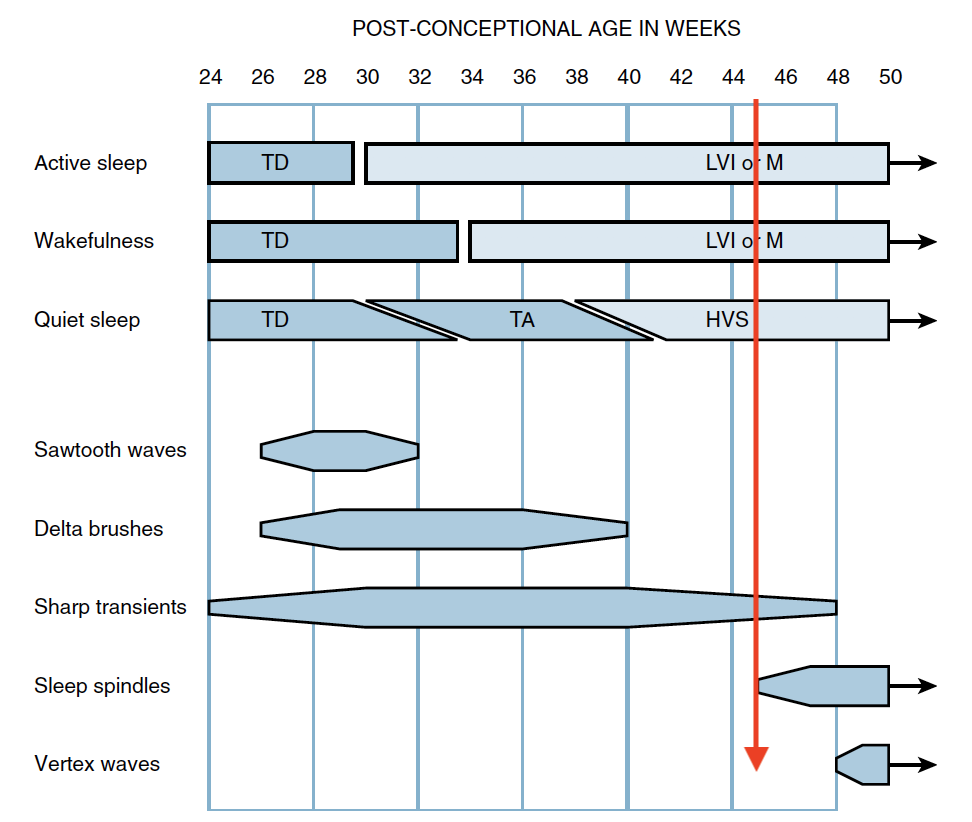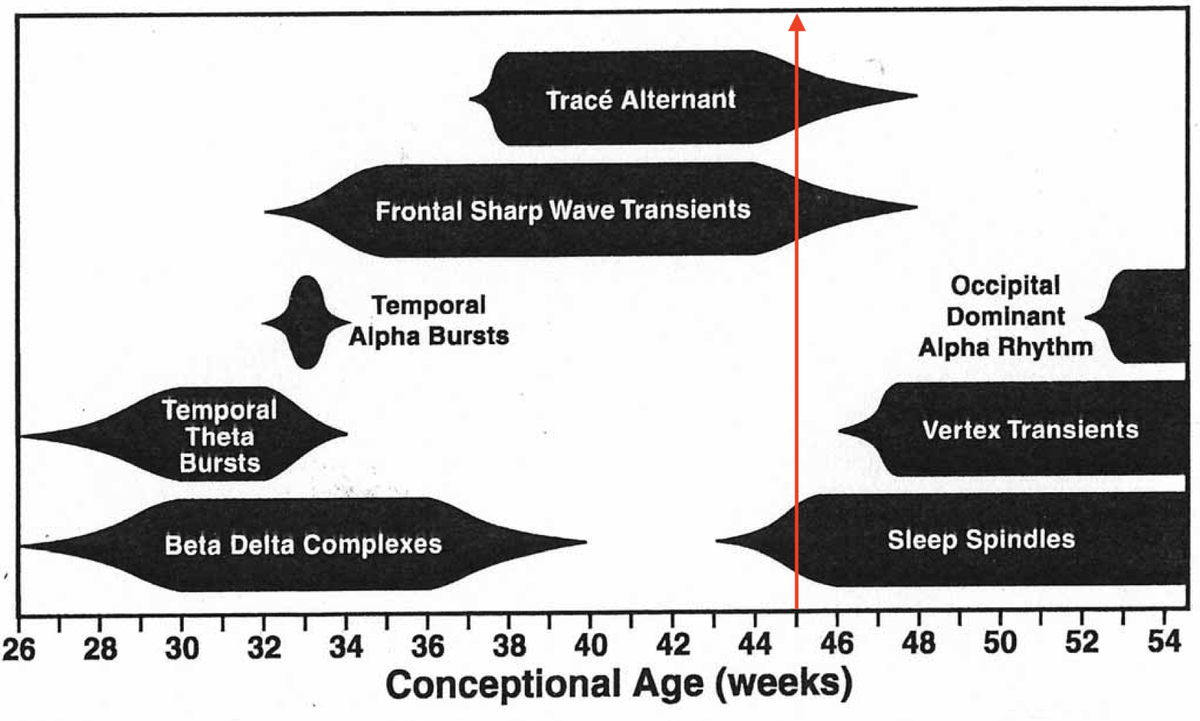Currently reading a study with one of my favorite findings, so let& #39;s play an EEG game:
If I will report this as "normal," what is the OLDEST this patient can be? Vote in the next tweet https://abs.twimg.com/emoji/v2/... draggable="false" alt="👇" title="Rückhand Zeigefinger nach unten" aria-label="Emoji: Rückhand Zeigefinger nach unten">! #Tweetorial to follow #MedEd #neurology #MedTwitter #FOAMed
https://abs.twimg.com/emoji/v2/... draggable="false" alt="👇" title="Rückhand Zeigefinger nach unten" aria-label="Emoji: Rückhand Zeigefinger nach unten">! #Tweetorial to follow #MedEd #neurology #MedTwitter #FOAMed
If I will report this as "normal," what is the OLDEST this patient can be? Vote in the next tweet
[Expand tweet to reveal poll if options not showing]
For this study to be normal, the patient must be UP TO:
For this study to be normal, the patient must be UP TO:
Bonus question  https://abs.twimg.com/emoji/v2/... draggable="false" alt="👇" title="Rückhand Zeigefinger nach unten" aria-label="Emoji: Rückhand Zeigefinger nach unten">
https://abs.twimg.com/emoji/v2/... draggable="false" alt="👇" title="Rückhand Zeigefinger nach unten" aria-label="Emoji: Rückhand Zeigefinger nach unten"> https://abs.twimg.com/emoji/v2/... draggable="false" alt="🤓" title="Nerd-Gesicht" aria-label="Emoji: Nerd-Gesicht">[again, might need to expand tweet to see the options]
https://abs.twimg.com/emoji/v2/... draggable="false" alt="🤓" title="Nerd-Gesicht" aria-label="Emoji: Nerd-Gesicht">[again, might need to expand tweet to see the options]
Based on the finding above, What is the YOUNGEST this patient must be? CA = postconceptional age
Based on the finding above, What is the YOUNGEST this patient must be? CA = postconceptional age
First things first: what are we looking at? SLEEP SPINDLES (SS) How do we know?
1. SS appear, as defined by its name, during sleep (more on this later) – https://abs.twimg.com/emoji/v2/... draggable="false" alt="✅" title="Fettes weißes Häkchen" aria-label="Emoji: Fettes weißes Häkchen"> our patient is asleep, as evidenced by lack of myogenic artifact and slow background
https://abs.twimg.com/emoji/v2/... draggable="false" alt="✅" title="Fettes weißes Häkchen" aria-label="Emoji: Fettes weißes Häkchen"> our patient is asleep, as evidenced by lack of myogenic artifact and slow background
1. SS appear, as defined by its name, during sleep (more on this later) –
2. SS tend be maximal over the central (C3, C4) electrodes and the vertex (Cz) –  https://abs.twimg.com/emoji/v2/... draggable="false" alt="✅" title="Fettes weißes Häkchen" aria-label="Emoji: Fettes weißes Häkchen"> indeed, our patient’s waves can be seen maximal over these leads
https://abs.twimg.com/emoji/v2/... draggable="false" alt="✅" title="Fettes weißes Häkchen" aria-label="Emoji: Fettes weißes Häkchen"> indeed, our patient’s waves can be seen maximal over these leads
3. SS are regular 12-14 Hz waves – https://abs.twimg.com/emoji/v2/... draggable="false" alt="✅" title="Fettes weißes Häkchen" aria-label="Emoji: Fettes weißes Häkchen">Want to count the example I gave you? (Spoiler- it’s 13 Hz)
https://abs.twimg.com/emoji/v2/... draggable="false" alt="✅" title="Fettes weißes Häkchen" aria-label="Emoji: Fettes weißes Häkchen">Want to count the example I gave you? (Spoiler- it’s 13 Hz)
3. SS are regular 12-14 Hz waves –
The most striking feature of the example above is that SS occur first over the left central region (C3/Cz) and about 2 seconds later, they occur over the right central region (C4/Cz). We say these SS are ASYNCHRONOUS
The reason I like SS is that they teach the huge difference between asynchronous and asymmetric findings on EEG:
 https://abs.twimg.com/emoji/v2/... draggable="false" alt="➡️" title="Pfeil nach rechts" aria-label="Emoji: Pfeil nach rechts"> ASYNCHRONY: findings occur in each hemisphere at different times, but their frequency "evens out" throughout the study
https://abs.twimg.com/emoji/v2/... draggable="false" alt="➡️" title="Pfeil nach rechts" aria-label="Emoji: Pfeil nach rechts"> ASYNCHRONY: findings occur in each hemisphere at different times, but their frequency "evens out" throughout the study
Compare this with:
 https://abs.twimg.com/emoji/v2/... draggable="false" alt="➡️" title="Pfeil nach rechts" aria-label="Emoji: Pfeil nach rechts"> ASYMMETRY: one side shows persistent differences in amplitude, rate (as in per-second) or frequency (as in how many times a finding occurs throughout the recording).
https://abs.twimg.com/emoji/v2/... draggable="false" alt="➡️" title="Pfeil nach rechts" aria-label="Emoji: Pfeil nach rechts"> ASYMMETRY: one side shows persistent differences in amplitude, rate (as in per-second) or frequency (as in how many times a finding occurs throughout the recording).
[BTW- this applies to any EEG element, not just SS]
[BTW- this applies to any EEG element, not just SS]
The key point: ASYNCHRONOUS sleep spindles are normal, typically until the age of 24 months (on the contrary, *asymmetric* sleep spindles are NOT).
While most kids seem to show SS symmetry after 12 months, most authors see asynchronous SS as normal within 1st 2 years of life
While most kids seem to show SS symmetry after 12 months, most authors see asynchronous SS as normal within 1st 2 years of life
SS change as we age:
1. Become more synchronous (full synch by age 24 mo)
2. Get shorter (typically 3-4 sec but up to 10 in babies vs. 1-2 sec but up to 4 in adults)
3. Go from arciform in infants to sinusoidal shape
4. Can start frontally max in infants, then move centrally max
1. Become more synchronous (full synch by age 24 mo)
2. Get shorter (typically 3-4 sec but up to 10 in babies vs. 1-2 sec but up to 4 in adults)
3. Go from arciform in infants to sinusoidal shape
4. Can start frontally max in infants, then move centrally max
SS also change as infants go thru sleep from lighter to deeper stages! Look at 3 captures from the same baby (CA 47-week) as the night progresses:
 https://abs.twimg.com/emoji/v2/... draggable="false" alt="1⃣" title="Tastenkappe Ziffer 1" aria-label="Emoji: Tastenkappe Ziffer 1"> asynchronous SS (R only)
https://abs.twimg.com/emoji/v2/... draggable="false" alt="1⃣" title="Tastenkappe Ziffer 1" aria-label="Emoji: Tastenkappe Ziffer 1"> asynchronous SS (R only)
 https://abs.twimg.com/emoji/v2/... draggable="false" alt="2⃣" title="Tastenkappe Ziffer 2" aria-label="Emoji: Tastenkappe Ziffer 2"> more synchronous SS (L and R co-occur, but L better formed first 2-3 seconds)
https://abs.twimg.com/emoji/v2/... draggable="false" alt="2⃣" title="Tastenkappe Ziffer 2" aria-label="Emoji: Tastenkappe Ziffer 2"> more synchronous SS (L and R co-occur, but L better formed first 2-3 seconds)
 https://abs.twimg.com/emoji/v2/... draggable="false" alt="3⃣" title="Tastenkappe Ziffer 3" aria-label="Emoji: Tastenkappe Ziffer 3"> fully synchronous!
https://abs.twimg.com/emoji/v2/... draggable="false" alt="3⃣" title="Tastenkappe Ziffer 3" aria-label="Emoji: Tastenkappe Ziffer 3"> fully synchronous!
Even when SS are synchronous, they also change throughout the nights: if you pay attention, you can see them become more prominent in frontal regions as sleep deepens (and they may get slightly slower at 11-12 Hz!). Don& #39;t have screen captures of this now but will get some soon
Let& #39;s now answer the bonus question: when do SS appear? Most authors point to emergence between 44-46 weeks postconceptional age. See Libenson (blue) and Hrachovy atlas (black) diagrams for reference. I love keeping these handy, you should too!
We should end by saying that sleep spindles DEFINE the onset of stage II sleep. When they appear, you know you got to stage 2. The reticular nucleus of the thalamus is the generator of spindle activity.
You see why I said this is one of my fave EEG findings, who& #39;s with me?! https://abs.twimg.com/emoji/v2/... draggable="false" alt="🤓" title="Nerd-Gesicht" aria-label="Emoji: Nerd-Gesicht">
https://abs.twimg.com/emoji/v2/... draggable="false" alt="🤓" title="Nerd-Gesicht" aria-label="Emoji: Nerd-Gesicht">
You see why I said this is one of my fave EEG findings, who& #39;s with me?!
@threadreaderapp unroll

 Read on Twitter
Read on Twitter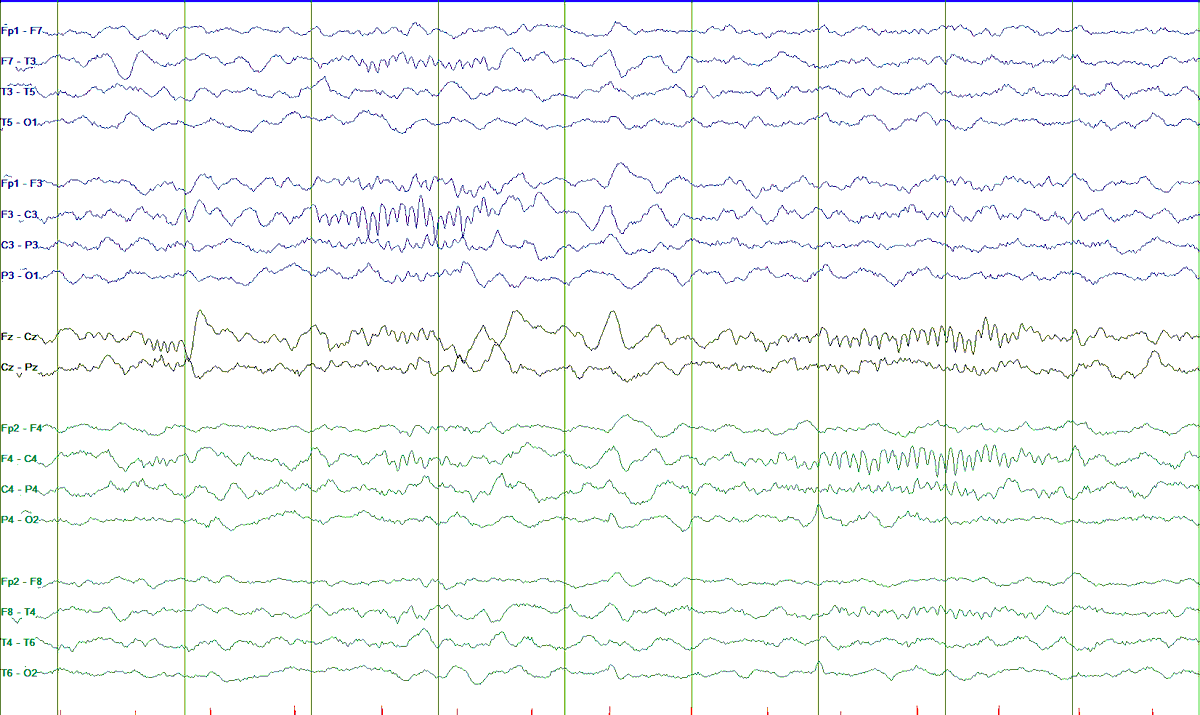 ! #Tweetorial to follow #MedEd #neurology #MedTwitter #FOAMed" title="Currently reading a study with one of my favorite findings, so let& #39;s play an EEG game:If I will report this as "normal," what is the OLDEST this patient can be? Vote in the next tweet https://abs.twimg.com/emoji/v2/... draggable="false" alt="👇" title="Rückhand Zeigefinger nach unten" aria-label="Emoji: Rückhand Zeigefinger nach unten">! #Tweetorial to follow #MedEd #neurology #MedTwitter #FOAMed" class="img-responsive" style="max-width:100%;"/>
! #Tweetorial to follow #MedEd #neurology #MedTwitter #FOAMed" title="Currently reading a study with one of my favorite findings, so let& #39;s play an EEG game:If I will report this as "normal," what is the OLDEST this patient can be? Vote in the next tweet https://abs.twimg.com/emoji/v2/... draggable="false" alt="👇" title="Rückhand Zeigefinger nach unten" aria-label="Emoji: Rückhand Zeigefinger nach unten">! #Tweetorial to follow #MedEd #neurology #MedTwitter #FOAMed" class="img-responsive" style="max-width:100%;"/>
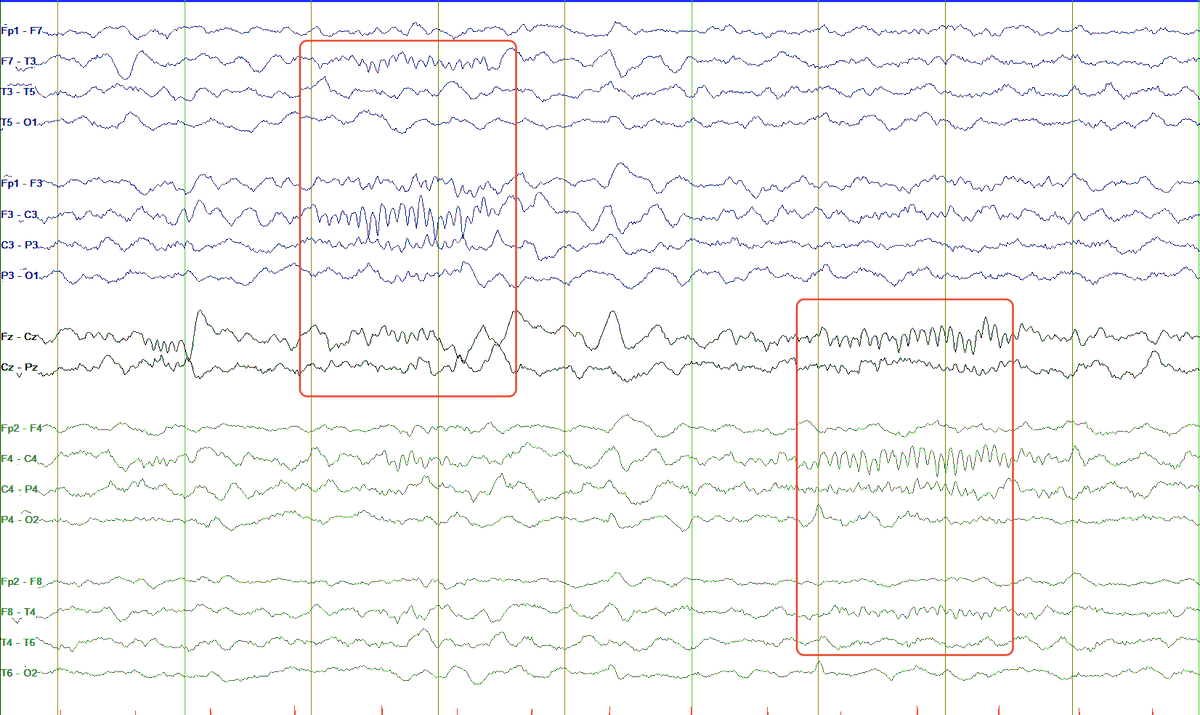
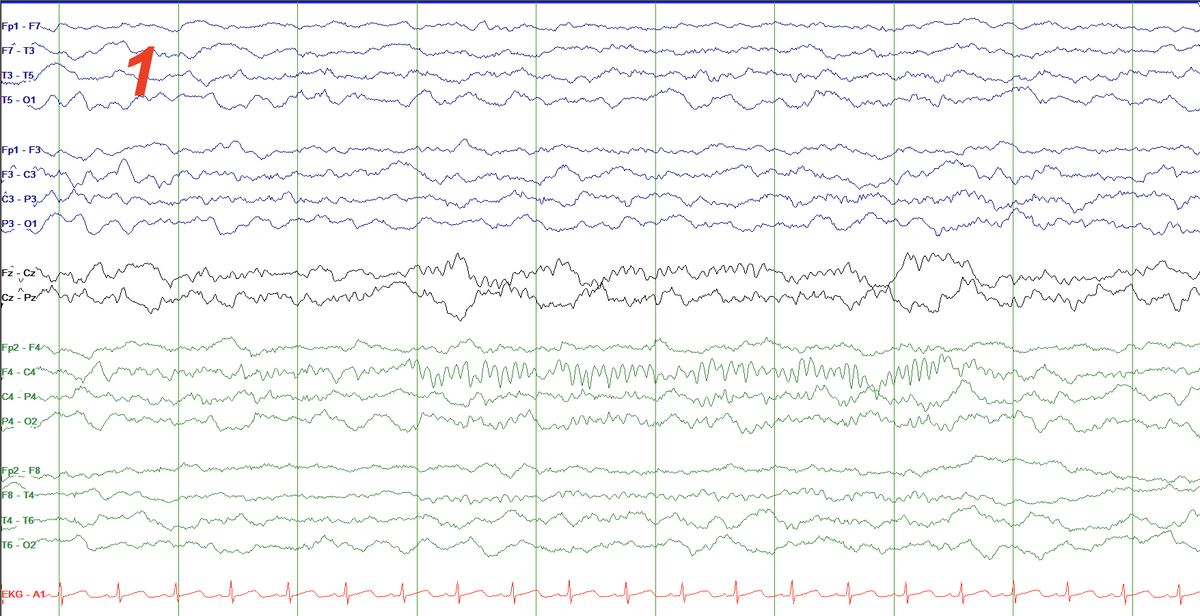 asynchronous SS (R only)https://abs.twimg.com/emoji/v2/... draggable="false" alt="2⃣" title="Tastenkappe Ziffer 2" aria-label="Emoji: Tastenkappe Ziffer 2"> more synchronous SS (L and R co-occur, but L better formed first 2-3 seconds)https://abs.twimg.com/emoji/v2/... draggable="false" alt="3⃣" title="Tastenkappe Ziffer 3" aria-label="Emoji: Tastenkappe Ziffer 3"> fully synchronous!" title="SS also change as infants go thru sleep from lighter to deeper stages! Look at 3 captures from the same baby (CA 47-week) as the night progresses:https://abs.twimg.com/emoji/v2/... draggable="false" alt="1⃣" title="Tastenkappe Ziffer 1" aria-label="Emoji: Tastenkappe Ziffer 1"> asynchronous SS (R only)https://abs.twimg.com/emoji/v2/... draggable="false" alt="2⃣" title="Tastenkappe Ziffer 2" aria-label="Emoji: Tastenkappe Ziffer 2"> more synchronous SS (L and R co-occur, but L better formed first 2-3 seconds)https://abs.twimg.com/emoji/v2/... draggable="false" alt="3⃣" title="Tastenkappe Ziffer 3" aria-label="Emoji: Tastenkappe Ziffer 3"> fully synchronous!">
asynchronous SS (R only)https://abs.twimg.com/emoji/v2/... draggable="false" alt="2⃣" title="Tastenkappe Ziffer 2" aria-label="Emoji: Tastenkappe Ziffer 2"> more synchronous SS (L and R co-occur, but L better formed first 2-3 seconds)https://abs.twimg.com/emoji/v2/... draggable="false" alt="3⃣" title="Tastenkappe Ziffer 3" aria-label="Emoji: Tastenkappe Ziffer 3"> fully synchronous!" title="SS also change as infants go thru sleep from lighter to deeper stages! Look at 3 captures from the same baby (CA 47-week) as the night progresses:https://abs.twimg.com/emoji/v2/... draggable="false" alt="1⃣" title="Tastenkappe Ziffer 1" aria-label="Emoji: Tastenkappe Ziffer 1"> asynchronous SS (R only)https://abs.twimg.com/emoji/v2/... draggable="false" alt="2⃣" title="Tastenkappe Ziffer 2" aria-label="Emoji: Tastenkappe Ziffer 2"> more synchronous SS (L and R co-occur, but L better formed first 2-3 seconds)https://abs.twimg.com/emoji/v2/... draggable="false" alt="3⃣" title="Tastenkappe Ziffer 3" aria-label="Emoji: Tastenkappe Ziffer 3"> fully synchronous!">
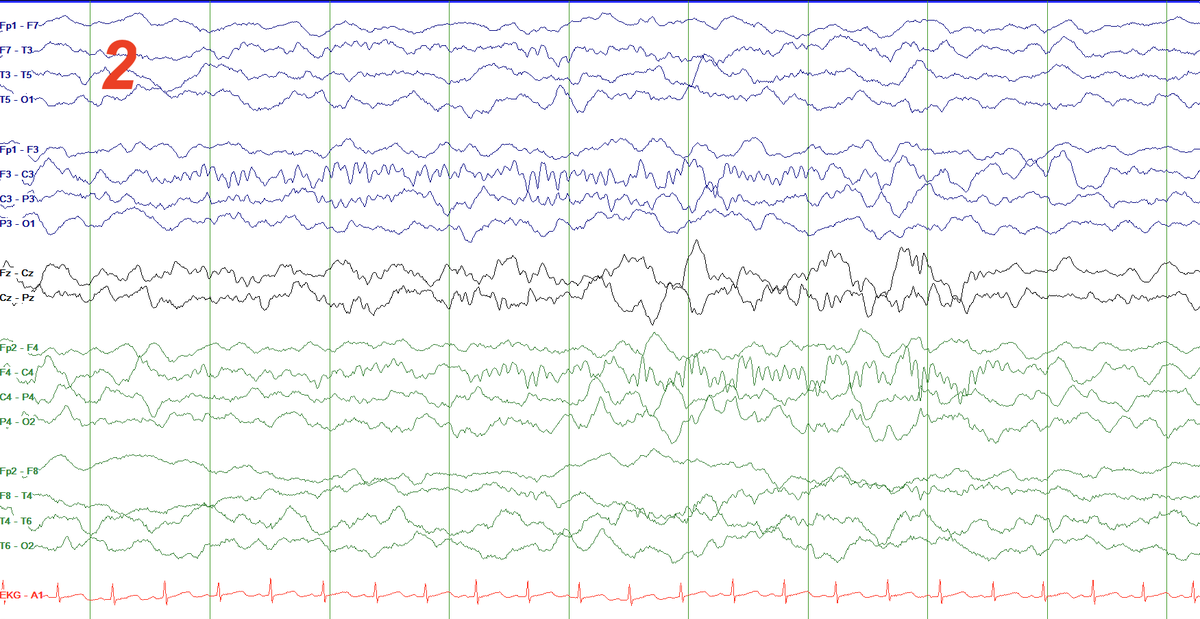 asynchronous SS (R only)https://abs.twimg.com/emoji/v2/... draggable="false" alt="2⃣" title="Tastenkappe Ziffer 2" aria-label="Emoji: Tastenkappe Ziffer 2"> more synchronous SS (L and R co-occur, but L better formed first 2-3 seconds)https://abs.twimg.com/emoji/v2/... draggable="false" alt="3⃣" title="Tastenkappe Ziffer 3" aria-label="Emoji: Tastenkappe Ziffer 3"> fully synchronous!" title="SS also change as infants go thru sleep from lighter to deeper stages! Look at 3 captures from the same baby (CA 47-week) as the night progresses:https://abs.twimg.com/emoji/v2/... draggable="false" alt="1⃣" title="Tastenkappe Ziffer 1" aria-label="Emoji: Tastenkappe Ziffer 1"> asynchronous SS (R only)https://abs.twimg.com/emoji/v2/... draggable="false" alt="2⃣" title="Tastenkappe Ziffer 2" aria-label="Emoji: Tastenkappe Ziffer 2"> more synchronous SS (L and R co-occur, but L better formed first 2-3 seconds)https://abs.twimg.com/emoji/v2/... draggable="false" alt="3⃣" title="Tastenkappe Ziffer 3" aria-label="Emoji: Tastenkappe Ziffer 3"> fully synchronous!">
asynchronous SS (R only)https://abs.twimg.com/emoji/v2/... draggable="false" alt="2⃣" title="Tastenkappe Ziffer 2" aria-label="Emoji: Tastenkappe Ziffer 2"> more synchronous SS (L and R co-occur, but L better formed first 2-3 seconds)https://abs.twimg.com/emoji/v2/... draggable="false" alt="3⃣" title="Tastenkappe Ziffer 3" aria-label="Emoji: Tastenkappe Ziffer 3"> fully synchronous!" title="SS also change as infants go thru sleep from lighter to deeper stages! Look at 3 captures from the same baby (CA 47-week) as the night progresses:https://abs.twimg.com/emoji/v2/... draggable="false" alt="1⃣" title="Tastenkappe Ziffer 1" aria-label="Emoji: Tastenkappe Ziffer 1"> asynchronous SS (R only)https://abs.twimg.com/emoji/v2/... draggable="false" alt="2⃣" title="Tastenkappe Ziffer 2" aria-label="Emoji: Tastenkappe Ziffer 2"> more synchronous SS (L and R co-occur, but L better formed first 2-3 seconds)https://abs.twimg.com/emoji/v2/... draggable="false" alt="3⃣" title="Tastenkappe Ziffer 3" aria-label="Emoji: Tastenkappe Ziffer 3"> fully synchronous!">
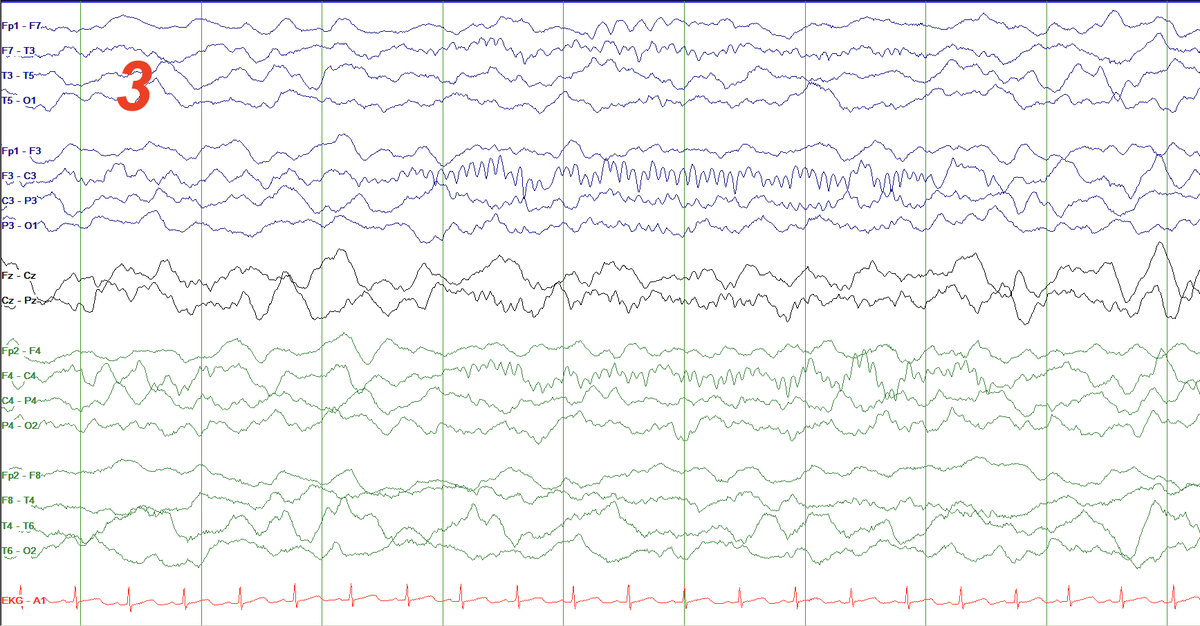 asynchronous SS (R only)https://abs.twimg.com/emoji/v2/... draggable="false" alt="2⃣" title="Tastenkappe Ziffer 2" aria-label="Emoji: Tastenkappe Ziffer 2"> more synchronous SS (L and R co-occur, but L better formed first 2-3 seconds)https://abs.twimg.com/emoji/v2/... draggable="false" alt="3⃣" title="Tastenkappe Ziffer 3" aria-label="Emoji: Tastenkappe Ziffer 3"> fully synchronous!" title="SS also change as infants go thru sleep from lighter to deeper stages! Look at 3 captures from the same baby (CA 47-week) as the night progresses:https://abs.twimg.com/emoji/v2/... draggable="false" alt="1⃣" title="Tastenkappe Ziffer 1" aria-label="Emoji: Tastenkappe Ziffer 1"> asynchronous SS (R only)https://abs.twimg.com/emoji/v2/... draggable="false" alt="2⃣" title="Tastenkappe Ziffer 2" aria-label="Emoji: Tastenkappe Ziffer 2"> more synchronous SS (L and R co-occur, but L better formed first 2-3 seconds)https://abs.twimg.com/emoji/v2/... draggable="false" alt="3⃣" title="Tastenkappe Ziffer 3" aria-label="Emoji: Tastenkappe Ziffer 3"> fully synchronous!">
asynchronous SS (R only)https://abs.twimg.com/emoji/v2/... draggable="false" alt="2⃣" title="Tastenkappe Ziffer 2" aria-label="Emoji: Tastenkappe Ziffer 2"> more synchronous SS (L and R co-occur, but L better formed first 2-3 seconds)https://abs.twimg.com/emoji/v2/... draggable="false" alt="3⃣" title="Tastenkappe Ziffer 3" aria-label="Emoji: Tastenkappe Ziffer 3"> fully synchronous!" title="SS also change as infants go thru sleep from lighter to deeper stages! Look at 3 captures from the same baby (CA 47-week) as the night progresses:https://abs.twimg.com/emoji/v2/... draggable="false" alt="1⃣" title="Tastenkappe Ziffer 1" aria-label="Emoji: Tastenkappe Ziffer 1"> asynchronous SS (R only)https://abs.twimg.com/emoji/v2/... draggable="false" alt="2⃣" title="Tastenkappe Ziffer 2" aria-label="Emoji: Tastenkappe Ziffer 2"> more synchronous SS (L and R co-occur, but L better formed first 2-3 seconds)https://abs.twimg.com/emoji/v2/... draggable="false" alt="3⃣" title="Tastenkappe Ziffer 3" aria-label="Emoji: Tastenkappe Ziffer 3"> fully synchronous!">
